Related Research Articles

Leptis or Lepcis Magna, also known by other names in antiquity, was a prominent city of the Carthaginian Empire and Roman Libya at the mouth of the Wadi Lebda in the Mediterranean.
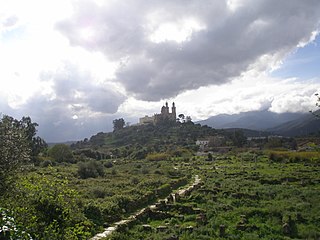
Hippo Regius is the ancient name of the modern city of Annaba, Algeria. It historically served as an important city for the Phoenicians, Berbers, Romans, and Vandals. Hippo was the capital city of the Vandal Kingdom from 435 to 439 AD. until it was shifted to Carthage following the Vandal capture of Carthage (439).

Oea was an ancient city in present-day Tripoli, Libya. It was founded by the Phoenicians in the 7th century BC and later became a Roman–Berber colony. As part of the Roman Africa Nova province, Oea and surrounding Tripolitania were prosperous. It reached its height in the 2nd and 3rd centuries AD, when the city experienced a golden age under the Severan dynasty in nearby Leptis Magna. The city was conquered by the Rashidun Caliphate with the spread of Islam in the 7th century and came to be known as Tripoli during the 9th century.
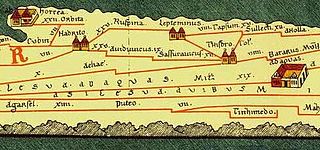
Leptis or Lepcis Parva was a Phoenician colony and Carthaginian and Roman port on Africa's Mediterranean coast, corresponding to the modern town Lemta, just south of Monastir, Tunisia. In antiquity, it was one of the wealthiest cities in the region.

Al-Khums or Khoms is a city, port and the de jure capital of the Murqub District on the Mediterranean coast of Libya with an estimated population of around 202,000. The population at the 1984 census was 38,174. Between 1983 and 1995 it was the administrative center of al-Khums District.
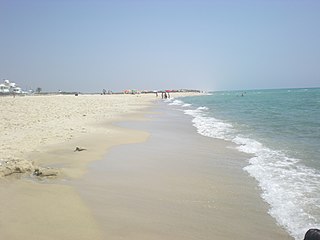
Korba, ancient Curubis, is a town in Tunisia on the eastern shore of the Cap Bon. It was the place of exile of the Carthaginian bishop Cyprian in the year leading up to his martyrdom. Modern Korba is in the Nabeul Governorate and had a population of 48,314 in 2014.

The area of North Africa which has been known as Libya since 1911 was under Roman domination between 146 BC and 672 AD. The Latin name Libya at the time referred to the continent of Africa in general. What is now coastal Libya was known as Tripolitania and Pentapolis, divided between the Africa province in the west, and Crete and Cyrenaica in the east. In 296 AD, the Emperor Diocletian separated the administration of Crete from Cyrenaica and in the latter formed the new provinces of "Upper Libya" and "Lower Libya", using the term Libya as a political state for the first time in history.

Girus Tarasii was a town in the Roman province of Numidia that became a residential episcopal see. It is tentatively identified with ruins situated at what is now called Henchir-Tarsa in Algeria.
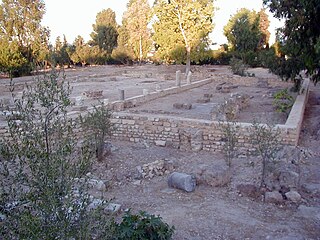
The Archdiocese of Carthage, also known as the Church of Carthage, was a Latin Catholic diocese established in Carthage, Roman Empire, in the 2nd century. Agrippin was the first named bishop, around 230 AD. The temporal importance of the city of Carthage in the Roman Empire had previously been restored by Julius Caesar and Augustus. When Christianity became firmly established around the Roman province of Africa Proconsulare, Carthage became its natural ecclesiastical seat. Carthage subsequently exercised informal primacy as an archdiocese, being the most important center of Christianity in the whole of Roman Africa, corresponding to most of today's Mediterranean coast and inland of Northern Africa. As such, it enjoyed honorary title of patriarch as well as primate of Africa: Pope Leo I confirmed the primacy of the bishop of Carthage in 446: "Indeed, after the Roman Bishop, the leading Bishop and metropolitan for all Africa is the Bishop of Carthage."

The diocese of Hierapolis, was a Christian bishopric in Phrygia.
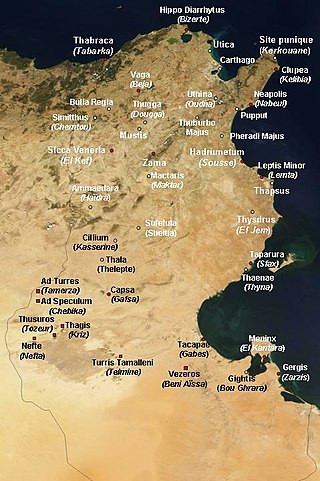
Turris Tamalleni was a town in North Africa, dating from the Carthageinian, Roman, Byzantine and Vandal era.
Henchir-Tebel is a town and archaeological site in Al Qayrawān, Tunisia, near Kairouan
Henchir-Khachoum is a locality and series of archaeological sites in Sidi Bouzid Governorate modern Tunisia. The ruins are strewn along a tributary of the Oued El Hatech river east of Sbeitla. During the Roman Empire there was a Roman town of the Roman province of Africa Proconsularis, called Muzuca, one of two North African towns to bare that name.
Erythrum was a city and bishopric in Roman Africa, which remains a Catholic titular see.
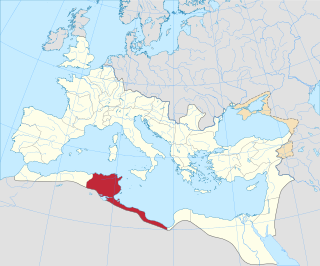
Precausa was an ancient civitas of the Roman province of Byzacena in North Africa. Its exact location remains unknown but it was in the present Sahel region of Tunisia.

The diocese of Caltadria is a suppressed and titular see of the Roman Catholic Church.
Satafi, was a Roman town in the Roman province of Mauretania Caesariensis, North Africa. It lasted through the Vandal Kingdom and Roman Empire, until at least the Muslim conquest of the Maghreb, in late antiquity. An exact location of the town is not known but, it was probably in Algeria.

The diocese of Dionysiana is a suppressed and titular see of the Roman Catholic Church.
The diocese of Presidio is a suppressed and titular see of the Catholic Church.
The Diocese of Vittoriana is a suppressed and titular see of the Roman Catholic Church.
References
- ↑ Bongmba, Elias Kifon (22 December 2015). "Christianity in North Africa". Routledge Companion to Christianity in Africa. Routledge. ISBN 978-1-134-50584-5 . Retrieved 29 April 2024.
- 1 2 3 Mullen, Roderic (1 December 2003). The Expansion of Christianity: A Gazetteer of its First Three Centuries. BRILL. ISBN 978-90-474-0232-9 . Retrieved 29 April 2024.
- 1 2 Martyn, John R. C.; O’Brien, David (15 December 2020). Arians and Vandals of the 4th-6th Centuries: Annotated translations of the historical works by Bishops Victor of Vita (Historia Persecutionis Africanae Provinciae) and Victor of Tonnena (Chronicon), and of the religious works by Bishop Victor of Cartenna (De Paenitentia) and Saints Ambrose (De Fide Orthodoxa contra Arianos), and Athanasius (Expositio Fidei). Cambridge Scholars Publishing. p. 239. ISBN 978-1-5275-6376-6 . Retrieved 29 April 2024.
- ↑ "Lepcis Magna, Byzantine Church - Livius". www.livius.org. Livius.org. Retrieved 29 April 2024.
- ↑ "Titular See of Leptis Magna, Libya 🇱🇾". GCatholic. GCatholic.org. Retrieved 29 April 2024.